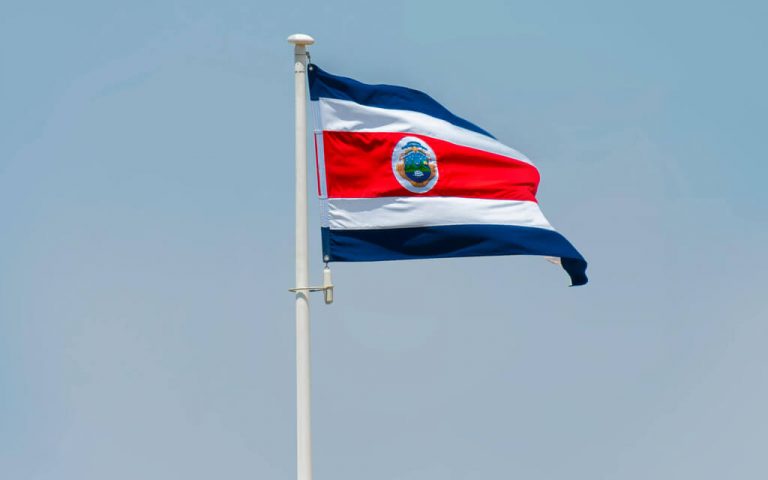the Costa Rica Flag: A Symbol of History and Pride
Introduction
The Costa Rican ensign, resplendent with its vivid hues and deliberate composition, stands as a beacon of national fervor and storied heritage. This emblem, far more than a mere standard, encapsulates the essence of the nation’s autonomy while echoing the indomitable spirit and rich cultural tapestry of its inhabitants. Let us delve into the profound chronicles, emblematic nuances, and cultural resonance that the Costa Rican flag so elegantly conveys.
History
Pre-Independence Flags:
Before independence, Costa Rica, like many Latin American nations, was under Spanish rule, using various colonial flags representing Spanish dominion.
Adoption of the Current Flag:
On September 29, 1848, Costa Rica adopted its current flag, designed by First Lady Pacífica Fernández Oreamuno, inspired by the French Tricolore to represent liberty, equality, and fraternity.
Changes Over the Years:
Since then, the flag has seen minor changes, the most notable being the addition of the coat of arms to the state flag in 1906.
Design & Symbolism
The flag has five horizontal stripes: blue, white, red, white, and blue. The central red stripe is twice as wide as the others. The colors symbolize the sky, peace, and the blood shed for freedom. The design reflects Costa Rica’s fight for independence and hope for a peaceful future.

Cultural Impact
The flag unites Costa Ricans and is central to national events and identity. There are two versions: the civil flag (used by citizens) and the state flag (with the coat of arms). Other flags include the presidential standard and military flags.
Protocol
The flag should be displayed from sunrise to sunset, properly illuminated at night, and treated with respect. It’s prominently displayed on national holidays like Independence Day on September 15.
Comparison & Significance
The Costa Rica flag resembles those of Thailand and North Korea but is distinguished by its color symbolism and coat of arms. It has witnessed key historical moments and remains a powerful symbol at international events.
Cultural Representation
In Costa Rican art, literature, and media, the flag is a symbol of national pride. It represents the collective identity and aspirations of the people, taught in schools to instill respect and understanding.
International Recognition
The flag is displayed at global events and diplomatic summits, representing Costa Rica’s sovereignty. It is made with care, available at various outlets, and now produced with eco-friendly materials, reflecting the country’s commitment to sustainability.
Conclusion
The Costa Rica flag embodies the nation’s history, values, and aspirations. It unites and inspires Costa Ricans, symbolizing their dedication to peace, liberty, and equality.


